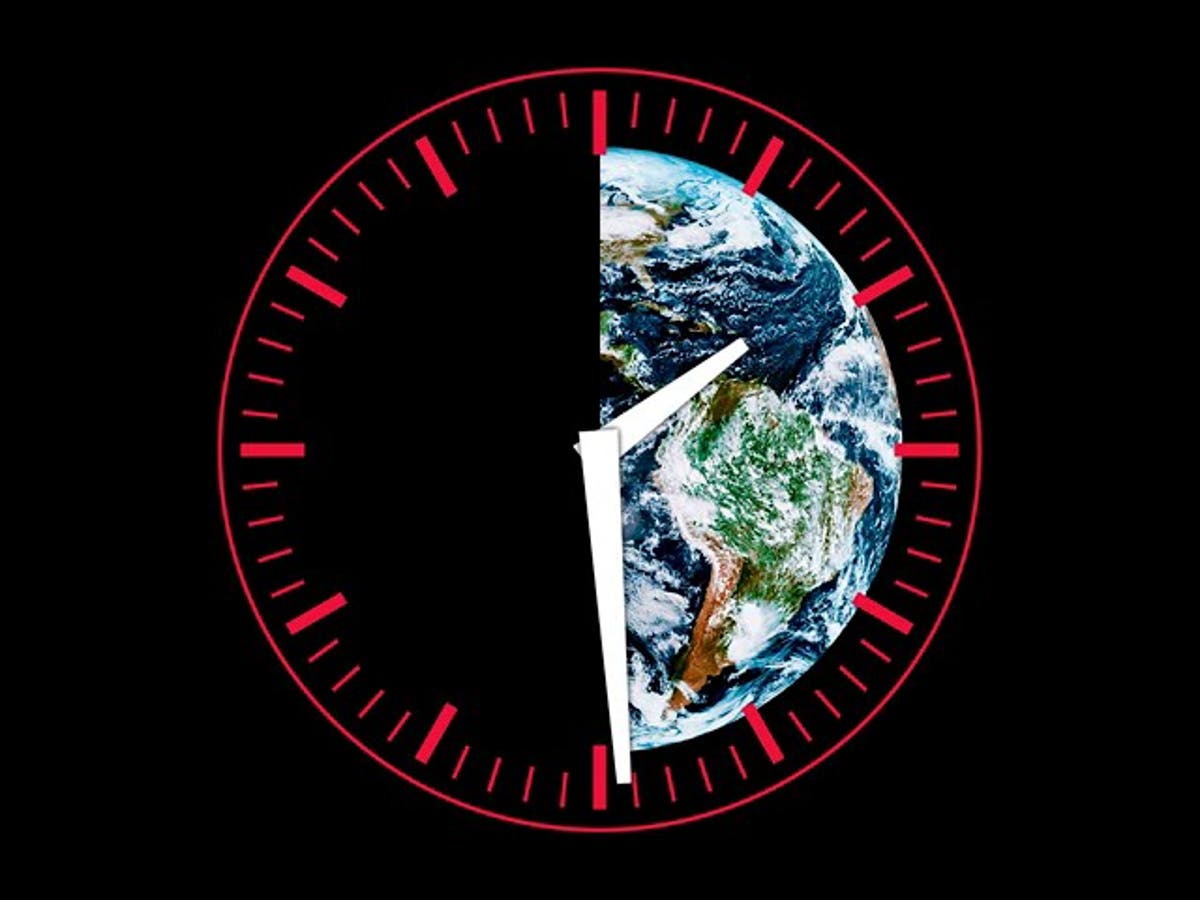Climate Clock Ticks: Five Years Remaining to Curb Temperature Rise to 1.5C

Climate Clock Ticks: Five Years Remaining to Curb Temperature Rise to 1.5C
The “Climate Clock” displayed in New York’s Union Square achieved a significant milestone on Saturday. It indicates the time remaining to limit global temperature rise to the ambitious goal of 1.5 degrees Celsius, as set in the 2015 Paris Agreement. The clock’s display dropped from six years to five years, emphasizing the urgency of taking immediate and substantial action to combat climate change.
Staying within the 1.5 degrees Celsius target is crucial because, beyond this threshold, scientists warn that the consequences of the climate crisis will escalate, leading to more severe impacts and further destabilizing the planet.

The announcement from the Climate Clock team at midday on Saturday acknowledged that the five-year mark is not the end, but rather a reminder that there is still a window of opportunity to prevent the most catastrophic effects of climate change. It serves as a call to action, urging individuals, governments, and organizations worldwide to take concrete steps and implement effective measures to mitigate climate change and protect the planet’s future.
The statement emphasizes that one of the biggest misconceptions about climate change is that its impacts are distant in the future. However, this summer’s events have demonstrated that the devastating effects of climate change are happening now. Urgent action is required as if we are facing a climate emergency at the present moment.
The Paris Agreement, which has been signed by nearly all countries worldwide, aimed to limit the rise in global temperatures to 1.5 degrees Celsius or, at the very least, well below 2 degrees Celsius. Currently, the world has already warmed by approximately 1.2 degrees Celsius over the past 150 years, and if current trends continue, it is on track to reach 2.7 degrees Celsius by the end of this century.

To highlight the urgency of the situation and call for action, activists organized a global day of action across five continents. Community events were held in numerous countries, including Egypt, Tanzania, Finland, and India. In Union Square, a vigil took place, featuring speeches, songs, and demands for an immediate cessation of fossil fuel use, which is a major driver of the ongoing climate crisis. The collective efforts of individuals and communities worldwide are crucial in addressing climate change and mitigating its severe impacts on the planet.
The effects of the climate crisis are becoming increasingly evident and pervasive across the globe. The impact of scorching, record-breaking heatwaves has been felt in Europe, North America, Asia, and Africa, leading to extreme temperatures that pose serious threats to human health, agriculture, and ecosystems. These heatwaves have brought about heat-related illnesses and deaths, and have put immense strain on energy systems and water resources.
Furthermore, the climate crisis has contributed to the intensification of storms, resulting in more powerful and destructive weather events. These storms have claimed the lives of hundreds of people and caused widespread devastation in various regions. The increased frequency and severity of hurricanes, cyclones, and typhoons have led to significant loss of life, damage to infrastructure, and disruption to communities.
Preliminary data indicates that the world experienced its hottest week ever at the beginning of July. Additionally, the month of June was recorded as the hottest month in human history. These observations underscore the alarming trend of rising global temperatures and the intensification of extreme weather events due to climate change.

In the United States, the recent extreme temperatures can be attributed to a weather phenomenon known as a “heat dome.” This heat dome has persisted for the past month, causing prolonged and intense heat waves. Heat domes occur when a high-pressure system traps hot air close to the ground, preventing it from dissipating and leading to sweltering conditions.
The situation in the Southwest United States is dire, with over 100 million people placed under heat alerts by the National Weather Service during the recent weekend. Phoenix, Arizona, has experienced an unprecedented heatwave, breaking records with 19 consecutive days where temperatures exceeded 110 degrees Fahrenheit (43 degrees Celsius). The scorching conditions have created life-threatening situations, and tragically, an experienced hiker lost their life in Death Valley due to the extreme heat. This marks the second fatality in the national park this month.
These extreme temperatures are a clear indication of the severity of the ongoing climate crisis and its impact on weather patterns. Heatwaves of this magnitude can have severe consequences for human health, causing heat-related illnesses and fatalities. Additionally, extreme heat poses significant risks to vulnerable populations, such as the elderly, children, and those without access to adequate cooling facilities.
The Climate Clock’s estimate is derived from research conducted by the Mercator Research Institute on Global Commons and Climate Change in Berlin. This research is based on data from the United Nations Intergovernmental Panel on Climate Change (IPCC), widely regarded as the most authoritative body on climate science globally. The IPCC regularly assesses the latest scientific literature and provides comprehensive and rigorous reports on climate change, its impacts, and potential mitigation and adaptation strategies.

By relying on data and findings from the IPCC, the Climate Clock aims to provide an accurate representation of the time remaining to limit global temperature rise to the ambitious goal of 1.5 degrees Celsius, as set in the 2015 Paris Agreement. The Clock serves as a visual reminder of the urgency of addressing change and underscores the need for immediate and concerted action to avoid the most catastrophic consequences of the crisis.




